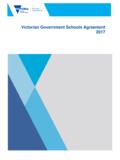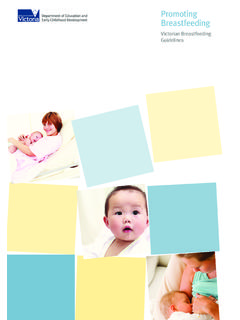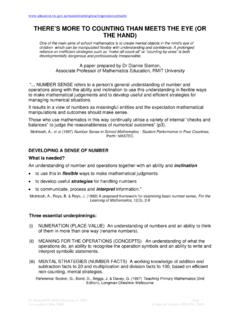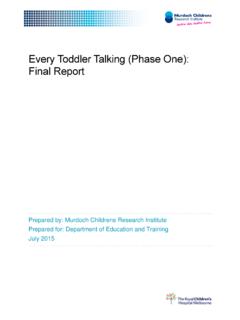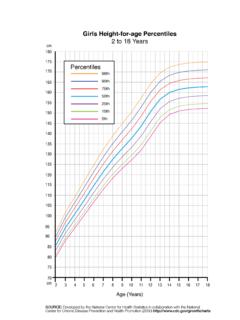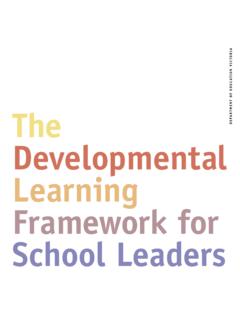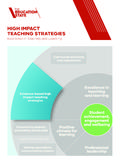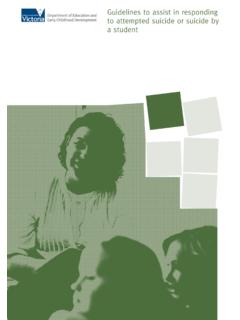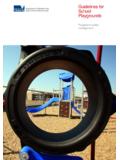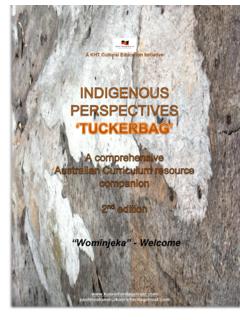Transcription of Welcome to Country and Acknowledgement of …
1 Welcome to Country and Acknowledgement of CountryA Guide for victorian SchoolsPublished 2010 by Wannik Unit System Policy Division Offi ce for Policy, Research and Innovation Department Education and Early Childhood Development Victoria State of Victoria 2010 The copyright of this document is owned by the State of Victoria. No part may be reproduced by any process except in accordance with the provisions of the Copyright Act by the Department of Education and Early Childhood Development 2 Treasury Place East Melbourne Victoria 3002 Also published on 978 0 7594 0578 3 Photography Wayne Quilliam Photography.
2 Vibe Alive 2009 and J Conway-ClarkAcknowledgementThis Welcome to Country and Acknowledgement of Country Guide for government schools was developed in partnership between the Department of Education and Early Childhood Development and the victorian aboriginal Education Association Incorporated (VAEAI).The victorian Indigenous Affairs Framework identifi es that long term improvements are required for victorian Koorie families and communities. To ensure that the victorian Government education system is consistent with these aspirations, in 2008 the Minister for Education launched Wannik: Learning Together, Journey to Our Future, the government s education strategy for Koorie strongly emphasises the need to encourage victorian government schools to celebrate and embrace Koorie culture through.
3 Repositioning the education of Koorie students within all our schools through strong leadership that creates a culture of high expectations and individualised learning for Koorie students Creating an environment that respects, recognises and celebrates Koorie history and cultural identity through practice and curriculum Celebrating Koorie culture and identity in all schools for all studentsDEECD in partnership with the victorian aboriginal Education Association Incorporated (VAEAI) has developed this Welcome to Country and Acknowledgment of Country victorian schools, becoming familiar with the basic protocols involved with conducting a Welcome to Country and Acknowledgement of Country is a fundamental fi rst step in developing a positive and meaningful relationship with the local Koorie the victorian context, a Welcome to Country or an Acknowledgement of Country ceremony demonstrates respect for Koorie people and acknowledges the spiritual.
4 Physical and cultural connection their ancestors have with their Country as the fi rst people of the land now known as should schools be encouraged to observe these protocolsInviting an Elder to perform a Welcome to Country ceremony or conducting an Acknowledgement of Country is a meaningful way in which schools can show respect for their local Koorie community. Many victorian Koorie people feel, or have previously felt, that non-Koorie people in Victoria have often not acknowledged that they were the fi rst people living in Victoria or that they maintain strong cultural and spiritual connections to to Country and Acknowledgment of Country ceremonies provide an opportunity for formal recognition and can lead to stronger local relationships and communication avenues being forged between schools and victorian Koorie should schools conduct Welcome to Country or Acknowledgement of Country ceremoniesSignifi cant events celebrating or focussing on local.
5 State or national Indigenous cultures should, where possible, be opened by an Elder who can perform a Welcome to Country ceremony. An Acknowledgement of Country can be used for all other signifi cant school can perform a Welcome to CountryA Welcome to Country can only be given by a Koorie Traditional Owner of the land on which the event or meeting is taking place. The Welcome is usually performed by an Elder and can also be made by a nominated can perform an Acknowledgement of CountryAn Acknowledgement of Country can be given by any member of the community who wishes to pay their respects to the Koorie Traditional Owners of the land on which the event or meeting is taking Acknowledgement of Country does not need to be an elaborate ceremony, simply a few words at the opening of a meeting.
6 Event or the fi rst step to approaching your local Indigenous communityIf schools wish to make a request for an Elder or representatives from the Koorie community to make a Welcome to Country the fi rst step is to contact the local Koorie community for advice. There is a list of victorian Indigenous organisations on the back page of this guide which may be able to provide advice on the most suitable way of securing the services of a local communication will also help you to establish if there are any special requirements for your event that may determine which members of the community will be able to perform services.
7 For example, there may be a gender specifi c element that by Koorie protocols would be determined either Men s Business or Women s Business . It is important to establish open and positive communication with Elders and the local Koorie community who may be able to assist you by providing schools need assistance to fi nd a suitable Elder or representative from the Koorie community to perform a Welcome to Country , contact your regional Koorie Education Coordinator or schools have to pay Elders for a Welcome to CountrySchools which have close contact with their local Koorie communities may be able to secure the services of an Elder at no charge.
8 It is, however, a sign of cultural respect that Elders are paid or otherwise remunerated for their cultural knowledge and authority within their schools fl y the aboriginal fl ag when holding these ceremoniesAll victorian government schools have been provided with an aboriginal fl ag. Schools are strongly encouraged to fl y the fl ag, such as those outlined in the back of this of the aboriginal FlagThe aboriginal Flag was recognised by the Federal Court of Australia in July 1995 under of the Flags Act 1953. Harold Thomas, a Luritja man from the Northern Territory, designed the aboriginal Flag in 1971.
9 The fl ag has become a recognised national symbol of unity for Indigenous people throughout do the fl ags colours representBlack represents the aboriginal people of Australia, Red represents the red earth and the spiritual relationship to the land and Yellow represents the sun, the giver of the aboriginal fl agIt is important to fl y the aboriginal fl ag the correct wayBlack at the topRed at the baseExamples of an Acknowledgement to CountryI would like to acknowledge the People, the Traditional Owners of the land on which we are gathered and pay my respects to their Elders both past and would like to acknowledge the Traditional Owners of the land on which we are gathered and pay my respects to their Elders both past and victorian TimelineSchools are encouraged to visit the link below.
10 It was produced by the Koorie Heritage Trust, and provides an overview of aboriginal Victoria from the pre-contact period through to the of Education and Early Childhood Development AddressWannik Unit, 33 St Andrews Place, East Melbourne 3002 Telephone 9637 contact your regional Koorie Education Coordinator through your regional offi ce for further information and support Indigenous Education Organisations victorian aboriginal Education Association Inc (VAEAI) & Local aboriginal Education Consultative Groups (LAECGs)Address355 High Street, Northcote 3070 Telephone 9481 0800 Web Heritage TrustAddress295 King Street, Melbourne 3000 Telephone 8622 Community Co-OperativesState wide support services and Title Services Victoria Peak body representing Native Title claimants groups in VictoriaTelephone 9321 Community Events and Key DatesDateEvent13 FebruaryAnniversary of Prime Minister s National ApologyMay - JuneNational Reconciliation Week3 JuneMabo DayFirst full week July NAIDOC WeekEarly AugustNational aboriginal and Torres Strait Islander Children s Day
